Using Your Camera Safely
Care to be Taken During Handling
Regarding Waterproof, Dustproof, and Shockproof Design
Precautions Before Using the Camera in the Water
Precautions When Using the Camera in the Water
Precautions After Using the Camera in the Water
Contents
Composition of the Operating Manual
Camera Features
Checking the Contents of the Package
Names of Parts
Names of Operating Parts
Monitor Indications
1 Getting Started
Attaching the Strap
Attaching the Strap
Attaching the Carabiner Strap
Powering the Camera
Charging the Battery
Installing the Battery
Using the AC Adapter
Installing the SD Memory Card
Number of Images Recordable on an SD Memory Card
Turning the Camera On and Off
Starting-up in the Playback Mode
Initial Settings
Setting the Display Language
Setting the Date and Time
2 Common Operations
Understanding the Button Functions
Capture Mode
Playback Mode
Switching Between Capture Mode and Playback Mode
Setting the Camera Functions
Operating the Menus
Menu List
3 Taking Pictures
Taking Still Pictures
Taking Pictures
Setting the Shooting Mode
Using the Face Detection Function
Taking Pictures Automatically (Auto Picture Mode)
Setting the Functions (Program Mode)
Taking Pictures in the Basic Mode (Green Mode)
Using the Zoom
Taking Pictures of Dark Scenes (Night Scene, Night Scene Portrait, Digital SR, Fireworks, and Candlelight Modes)
Taking Pictures of People (Portrait Mode)
Taking Pictures of Children (Kids Mode)
Taking Pictures of Your Pet (Pet Mode)
Taking Pictures of Sports and Leisure Activities (Surf & Snow/Sport Mode)
Taking Pictures of Text (Text Mode)
Taking Pictures in Digital Microscope Mode
Framing Your Pictures (Frame Composite Mode)
Using the Self-timer
Taking a Series of Pictures (Continuous Shooting/Burst Shooting)
Taking Pictures Using the Remote Control Unit (Optional)
Taking Pictures at a Set Interval (Interval Shoot)
Taking Pictures with Automatic Exposure Adjustment (Auto Bracket)
Using the Digital Wide Function (Digital Wide Mode)
Taking Panoramic Pictures (Digital Panorama Mode)
Setting the Shooting Functions
Selecting the Flash Mode
Selecting the Focus Mode
Setting the Image Tone
Selecting the Number of Recorded Pixels
Selecting the Quality Level of Still Pictures
Adjusting the White Balance
Setting the AE Metering
Setting the Sensitivity
Setting ISO Correction in AUTO
Setting the Exposure (EV Compensation)
Correcting the Brightness (D-Range Setting)
Setting Pixel Track SR
Setting the Interval Shooting
Setting Blink Detection
Setting the Instant Review
Setting the Green Button
Setting the Image Sharpness (Sharpness)
Setting the Saturation/Tone Adjustment
Setting the Image Contrast (Contrast)
Setting the Date Imprint Function
Setting the Macro Light
Taking Pictures Underwater
Taking Underwater Pictures (Underwater Mode/ Underwater Movie Mode)
Recording Movies
Recording Movies
Selecting the Number of Recorded Pixels and Frame Rate for Movies
Setting the Movie SR (Movie Shake Reduction) Function
Recording a Movie from Pictures Taken at a Set Interval (Interval Movie)
Saving the Settings (Memory)
4 Playing Back and Deleting Images
Playing Back Images
Playing Back Still Pictures
Playing Back a Movie
Multi-Image Display
Using the Playback Function
Slideshow
Rotating the Image
Zoom Playback
Zoom In on the Subject’s Face Automatically (Face Close-up Playback)
Deleting Images and Sound Files
Deleting a Single Image/Sound File
Deleting Selected Images and Sound Files
Deleting All Images and Sound Files
Recovering Deleted Images
Protecting Images and Sound Files from Deletion (Protect)
Connecting the Camera to AV Equipment
Connecting the Camera to a Video IN Jack
Connecting the Camera to an HDMI Terminal
5 Editing and Printing Images
Editing Images
Changing the Image Size (Resize)
Cropping Images
Processing Images So That Faces Look Smaller
Using the Digital Filters
Using the Ink Rubbing Filter
Creating a Collage Image
Red-eye Compensation
Adding a Frame (Frame Composite)
Overlaying Your Original Frame on an Image
Editing Movies
Copying Images and Sound Files
Setting the Printing Service (DPOF)
Printing a Single Image
Printing All Images
6 Recording and Playing Back Sound
Recording Sound (Voice Recording Mode)
Setting Voice Recording
Recording Sounds
Playing Back Sound
Adding a Voice Memo to Images
Recording a Voice Memo
Playing Back a Voice Memo
7 Settings
Camera Settings
Formatting an SD Memory Card
Changing the Sound Settings
Changing the Date and Time
Setting the Alarm
Setting the World Time
Setting the Text Size on the Menu
Changing the Display Language
Changing the System for Naming Folders
Changing the Video Output Format
Selecting the HDMI Output Format
Setting the Eye-Fi Communication
Adjusting the Brightness of the Display
Using the Power Saving Function
Setting Auto Power Off
Setting the Quick Zoom Function
Setting the Guide Display
Perform Pixel Mapping
Registering the Subscreen Image (Subscreen Input)
Changing the Start-up Screen
Resetting to Default Settings (Reset)
Displaying the Clock Mode
8 Connecting to a Computer
Setting Up Your Computer
Provided Software
System Requirements
Installing the Software
Setting the USB Connection Mode
Connecting to a Windows PC
Connecting the Camera and Your Windows PC
Transferring Images
Disconnecting the Camera from Your Windows PC
Starting “MediaImpression 2.0 for PENTAX”
Viewing Images
Details on How to Use “MediaImpression 2.0 for PENTAX”
Connecting to a Macintosh
Connecting the Camera and Your Macintosh
Transferring Images
Disconnecting the Camera from Your Macintosh
Starting “MediaImpression 2.0 for PENTAX”
Viewing Images
Details on How to Use “MediaImpression 2.0 for PENTAX”
Transferring Images Using an Eye-Fi Card
9 Appendix
Functions Available for Each Shooting Mode
Messages
Troubleshooting
Default Settings
List of World Time Cities
Optional Accessories
Main Specifications
Warranty Policy
Index
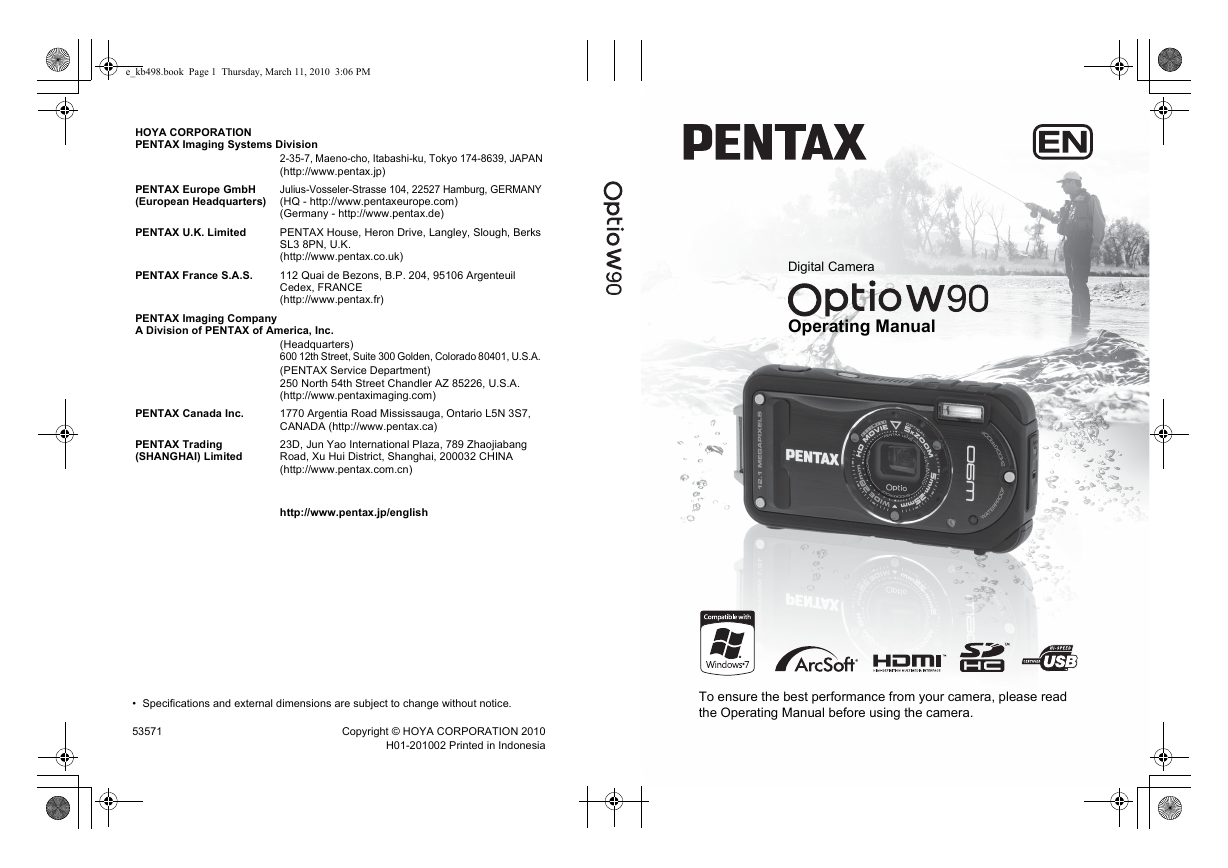
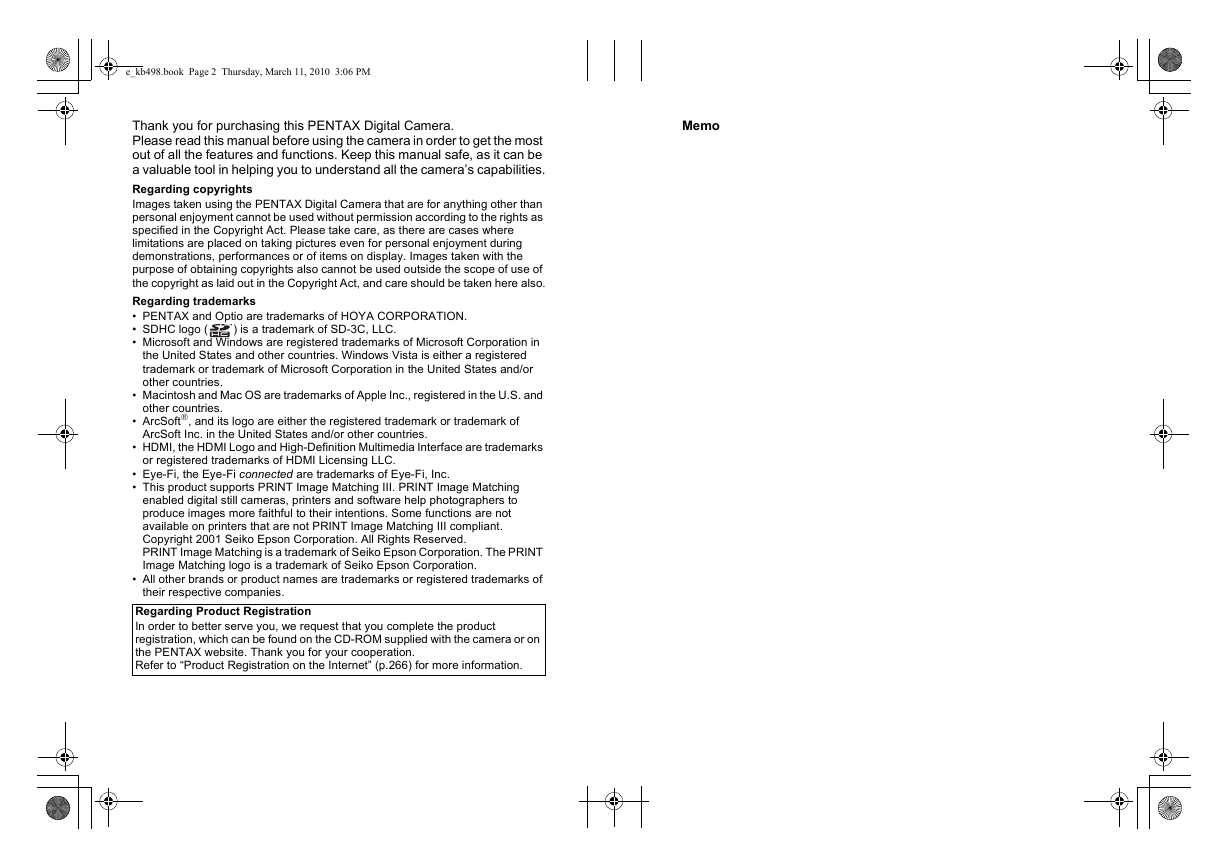
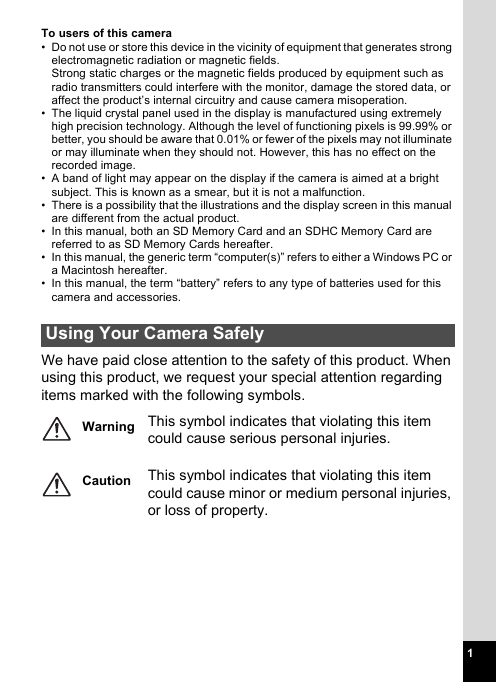
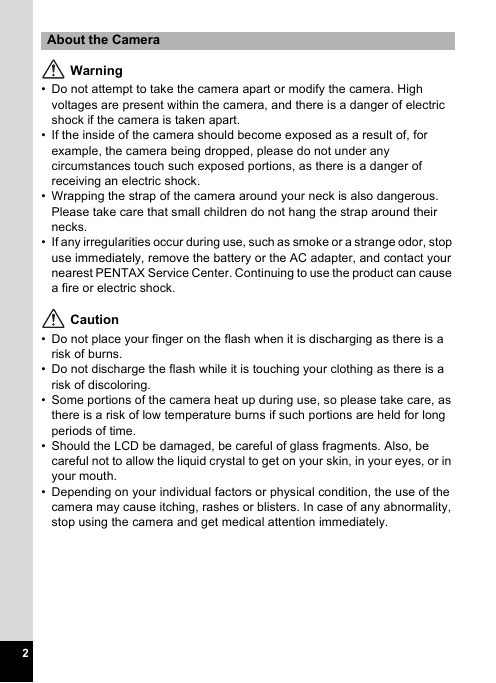
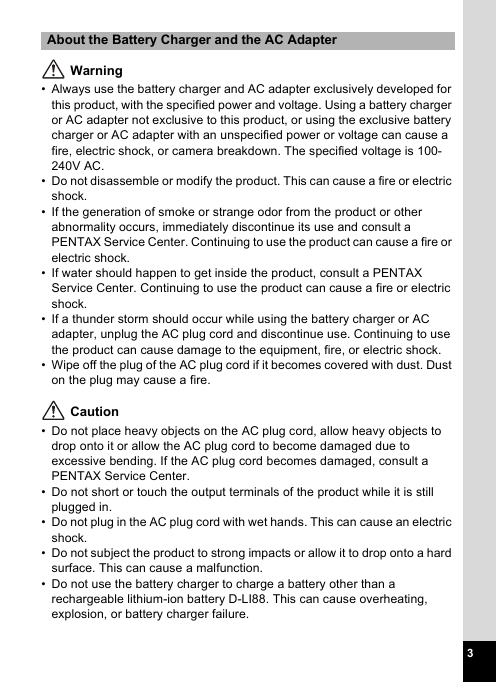
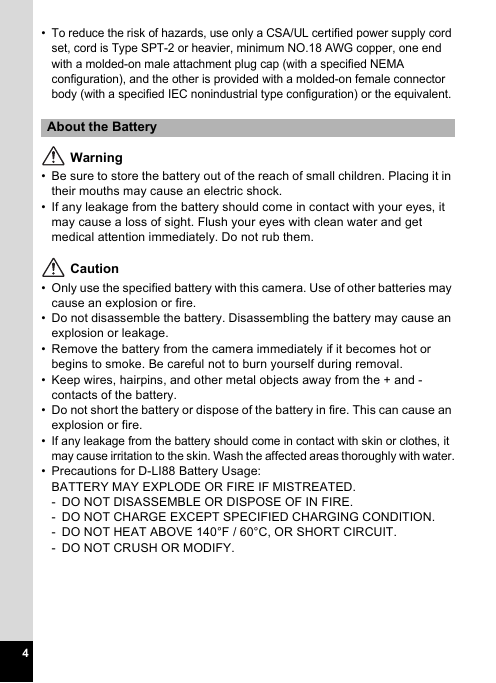
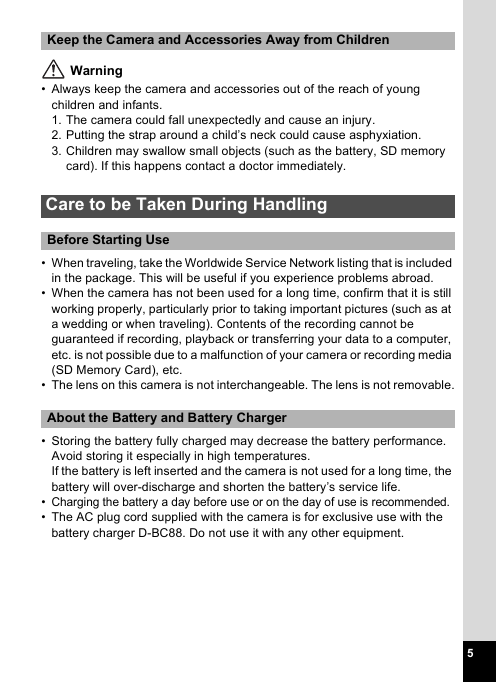
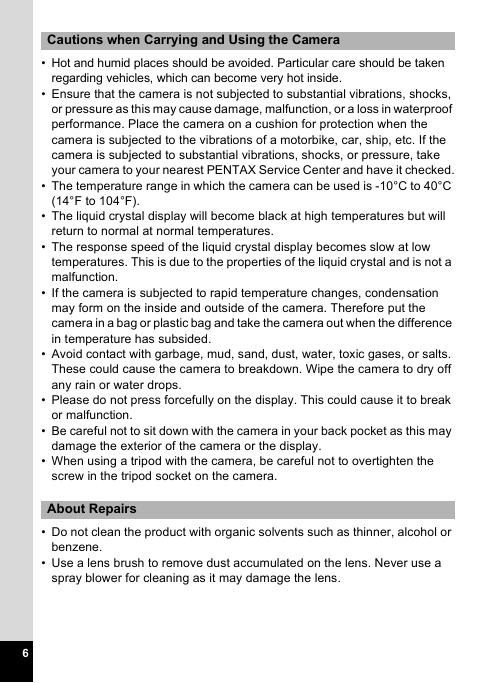








 2023年江西萍乡中考道德与法治真题及答案.doc
2023年江西萍乡中考道德与法治真题及答案.doc 2012年重庆南川中考生物真题及答案.doc
2012年重庆南川中考生物真题及答案.doc 2013年江西师范大学地理学综合及文艺理论基础考研真题.doc
2013年江西师范大学地理学综合及文艺理论基础考研真题.doc 2020年四川甘孜小升初语文真题及答案I卷.doc
2020年四川甘孜小升初语文真题及答案I卷.doc 2020年注册岩土工程师专业基础考试真题及答案.doc
2020年注册岩土工程师专业基础考试真题及答案.doc 2023-2024学年福建省厦门市九年级上学期数学月考试题及答案.doc
2023-2024学年福建省厦门市九年级上学期数学月考试题及答案.doc 2021-2022学年辽宁省沈阳市大东区九年级上学期语文期末试题及答案.doc
2021-2022学年辽宁省沈阳市大东区九年级上学期语文期末试题及答案.doc 2022-2023学年北京东城区初三第一学期物理期末试卷及答案.doc
2022-2023学年北京东城区初三第一学期物理期末试卷及答案.doc 2018上半年江西教师资格初中地理学科知识与教学能力真题及答案.doc
2018上半年江西教师资格初中地理学科知识与教学能力真题及答案.doc 2012年河北国家公务员申论考试真题及答案-省级.doc
2012年河北国家公务员申论考试真题及答案-省级.doc 2020-2021学年江苏省扬州市江都区邵樊片九年级上学期数学第一次质量检测试题及答案.doc
2020-2021学年江苏省扬州市江都区邵樊片九年级上学期数学第一次质量检测试题及答案.doc 2022下半年黑龙江教师资格证中学综合素质真题及答案.doc
2022下半年黑龙江教师资格证中学综合素质真题及答案.doc